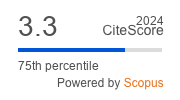Article | Open Access
Adaptations in Youths’ Willingness to Be Spatially Mobile: Influence of Status Aspirations and Regional Disparities
| Views: | 727 | | | Downloads: | 723 |
Abstract: Spatial mobility is key to facilitating successful transitions into vocational education and training (VET), especially for youths from disadvantaged regions. In line with the agency‐structure framework, the decision to become mobile is conceptualized as an adaptive strategy that young people employ to achieve their goals when faced with persistent challenges or regional barriers. This study investigates how youths applying for VET adapt their willingness to be spatially mobile over time. It examines the influence of occupational status aspirations and the regional opportunity structure on this decision‐making process. Using data from the National Educational Panel Study (NEPS), multilevel growth curve models are estimated to analyze adaptations in the mobility radius of VET applicants over up to three years (𝑁 = 1,017). To assess the regional opportunity structure, small‐scale administrative geospatial data on the availability of youths’ aspired occupations are used as an individualized indicator of regional mismatch. The results show that VET applicants’ willingness to be mobile increases over time. High‐status aspirations are consistently associated with a greater willingness to be mobile, largely independent of search duration or regional mismatch. Conversely, VET applicants with lower status aspirations exhibit notable adaptations, adjusting their mobility radius, particularly in response to increasing search duration or regional mismatch. These findings highlight the complex interplay between individual aspirations and the regional opportunity structure in shaping adaptations in the willingness to become mobile of unsuccessful VET applicants.
Keywords: agency and structure; regional disparities; school‐to‐VET transitions; spatial mobility; status aspirations
Supplementary Files:
Published:
© Linda Hoffmann. This is an open access article distributed under the terms of the Creative Commons Attribution 4.0 license (http://creativecommons.org/licenses/by/4.0), which permits any use, distribution, and reproduction of the work without further permission provided the original author(s) and source are credited.


